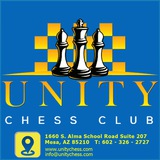Black’s pieces are mobilised, so he tries to find counterplay in the centre. If he allows h4-h5 and the subsequent opening of diagonals, the black knight will have to occupy the passive square f8, whilst 18...h5 would give the white knight an outpost on g5.
The knight occupies a blockading position, and is also taking part in the attack.
Black’s king is weak, so White could keep the queens on, without worrying about the exchange: 24.Qg3! Nd3 25.Rxd3! cxd3 26.Qxd3 Rf8 27.Nf3 – the attack on the light squares decides.
The most solid – the d5-pawn needs to be blockaded or destroyed and the passed e- and f-pawns should decide the game.
26...Rb8 27.Nxb3 cxb3 28.Be6+ Kf8 29.Bxd5 Bxd5 30.Nxd5 Rbc8 31.f4 Rc2 32.f5 Bxe5 33.Rxe5 Rxb2 34.Re3 b5 35.Kh2!
The king on h2 justifies its position, as the black pawn queens without check! Black resigned.
The centre is closed, and the pawn chain b2-c3-d4-e5 is directed towards the kingside, so that is the side on which White should play, the side on which he has more space. The decisive factor in this is the control of various dark squares, especially f4. To seize these squares for his knight, White is prepared to sacrifice material.
Black is also worse after 17...gxh4 18.Nf4 Qd7 19.Bh3 0-0-0 20.Nxe6 Qxe6 21.Ng5!? Qg8 22.Rxf5 Kb8 23.Kh2+/=. Although the white king is exposed, Black cannot bring up any reserves to attack it, as his knights on b6 and c6 are virtually just spectators. This means that White effectively has two extra pieces on the kingside!
